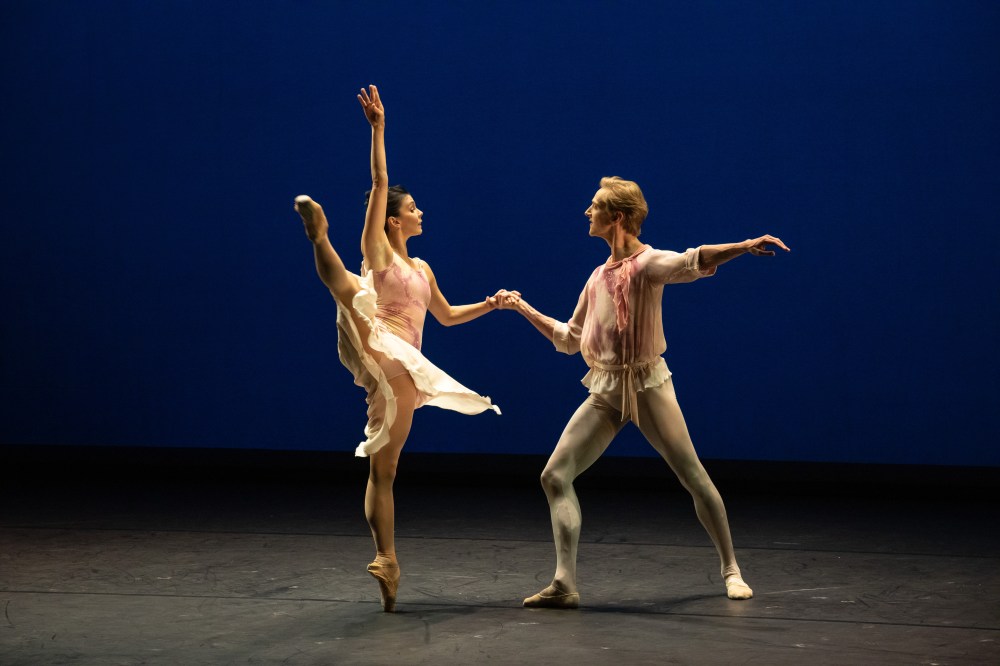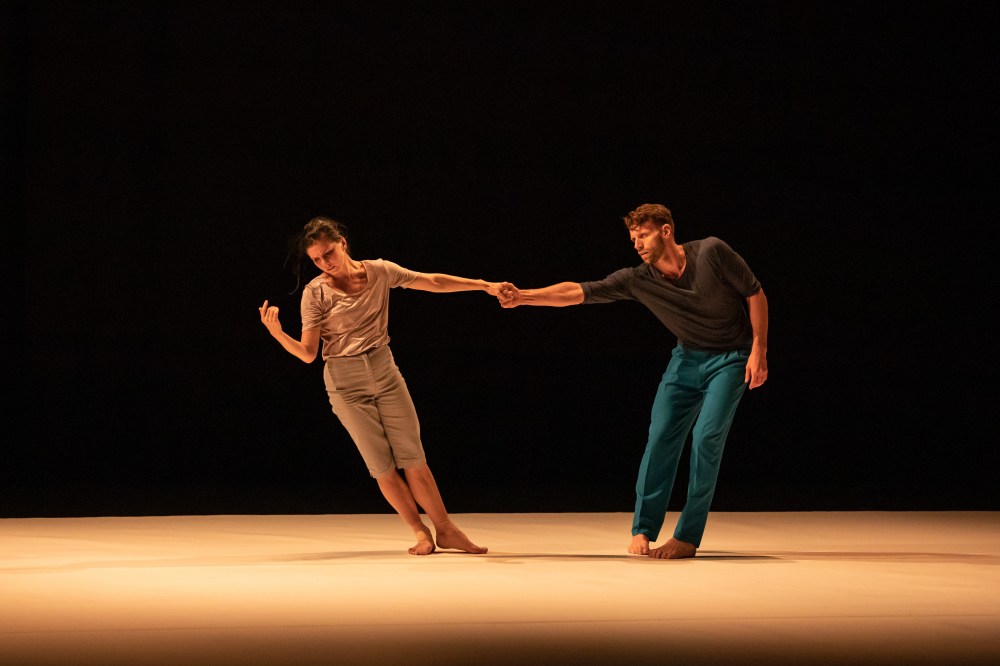Drama Theatre, Sydney Opera House, August 29.
Natalia Osipova is the most arresting classical dancer of her generation. Others may have an inner fire that burns brightly but she has a furnace. Osipova is incandescent.
For the past six years she has made The Royal Ballet her base and that company’s foundational commitment to story-telling through dance suits her well, whether a ballet has an overt narrative or not. Osipova’s decision to open her self-curated program with the pas de deux from Antony Tudor’s The Leaves are Fading (1975) is inspired, and not only because Tudor, at one time considered revolutionary, is somewhat neglected these days. It is wonderful to be reminded of his psychologically penetrating gifts. In Leaves, a late work to Dvorak, a world of meaning lies beneath the most delicate gestures, looks and quicksilver changes of direction in the upper body.

Osipova dances this with a favourite partner, the stellar David Hallberg from American Ballet Theatre and The Australian Ballet, but here one can only look at her. She is mesmerising. Osipova has subtitled the evening “with David Hallberg” and danced with him again in the ravishing final offering, a new pas de deux for the two by Alexei Ratmansky to Sibelius’s Valse Triste. Hallberg’s partnering had looked a little effortful in the Tudor but by this point in the evening had found his centre. His smile, which in the Tudor had seemed less genuine than Osipova’s, was now warmer as Osipova threw herself into his arms with infectious abandon.
Hallberg might get his name in the title but Osipova’s other two partners are just as valuable in the contemporary duos that show Osipova in a different light. Iván Pérez’s new Flutter is a whirlwind of fleeting moods, by turns skittish, playful, ecstatic, exquisitely tender and much else. Osipova and Jonathan Goddard, dressed similarly in translucent white trousers and tops, could be twins, so close do they seem as they explore the unknown and unknowable. It’s them against the world, tossed about by Nico Muhly’s intriguing soundscape Mothertongue.

They skip and hop in and out of the light, they stagger and regain their balance, she flops and he supports her. More than once Goddard holds Osipova aloft, she with arms outstretched as if she’s a kid pretending to be an aeroplane. Most affectingly, as Osipova huddles on the floor Goddard protectively wraps his arms around her.
In Roy Assaf’s absorbing Six Years Later (2011) a couple negotiates a complicated, darkly intense relationship. Perhaps they have already have parted and may simply be remembering what they had, with its conflicts and joys. As with Flutter, the chemistry Osipova has here with her partner Jason Kittelberger (they are also together in real life) makes it impossible to look away.
The two enter holding hands but are soon jostling and bumping one another, or showing off extravagantly. They have fun and they have an argument. Assaf’s choreography may not break any new ground but Osipova and Kittelberger make it live and breathe.

Two solos, both new commissions, are the disposable bits. Hallberg has a ho-hum work by Kim Brandstrup on an artist’s internal tumult. In Absentia sees Hallberg lost in thought, listening to Bach and trying this move and that, starting and stopping. Hallberg looks wonderful, of course, but that’s a given.
Yuka Oishi’s brief Ave Maria for Osipova, to Schubert, is overwrought and forgettable. It’s lovely to see the dramatic arch of Osipova’s foot in a pointe shoe but less convincing to experience how trite Oishi makes this beautiful piece of music feel. Happily it’s a very brief piece, although long enough to get me thinking about the signature solos other dancers have used in programs of this kind. Pavlova had her Dying Swan and Sylvie Guillem the blazing Two, choreographed by Russell Maliphant. I doubt Ave Maria will have the same lasting impact.
Productions such as Natalia Osipova’s Pure Dance have awkwardness built into them. Osipova appears in five of the six short pieces so there are substantial pauses during each half of the performance. But if, like me, you would watch Osipova dance the phone book, this is unmissable.
Natalia Osipova’s Pure Dance ends at the Sydney Opera House on August 31.
A version of this review appeared in The Australian on August 29.